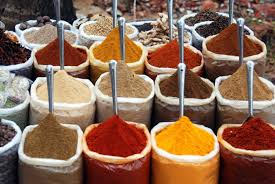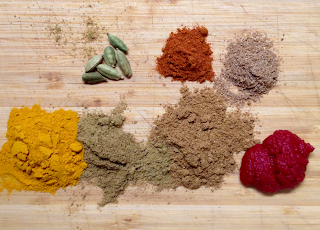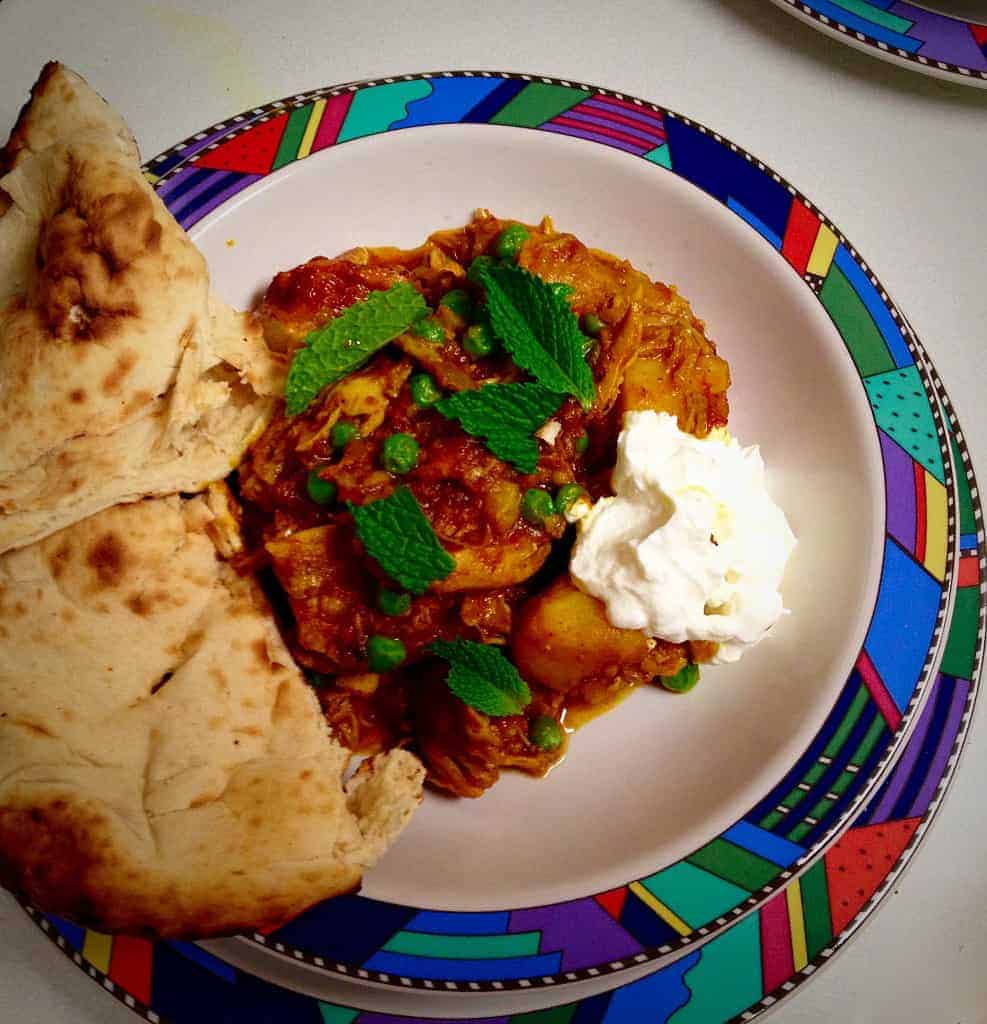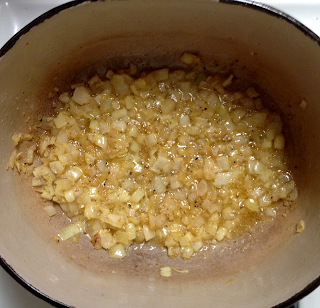I love Indian food. Its intriguing blend of exotic spices and flavors are so distinctive and so transforming that it really does represent a cuisine far from our own American classics. Take this dish from Bon Appetit. It transforms the simple and inexpensive Chicken leg and thigh into a feast for all the senses: The scent for the nose. The color for the eyes. The taste for the palate. And talk about one pot cooking! It even includes potatoes so aside from the Indian bread of choice, Naan and some yogurt, dinner comes together effortlessly in a large Dutch Oven. If Indian food seems counter-intuitive in the heat of summer until you remember that the sub-continent itself is one of the warmest places on earth. Only in the Himalayas does the temperature average 68 degrees. The rest of the country hovers in the 70s and 80s in winter and soars into the 90s and even 100s in the heat of summer. So why does this hot country share a passion for spicy, hot food?
 |
| Irresistible Indian Spices |
India is hardly alone in its passion for hot and spicy. Central and South America, Africa, Southeast Asia and Caribbean countries all eat foods flavored with chile peppers and spices. The reason is quite simple: Spicy food makes you sweat, which in turn cools you down as it evaporates. Interestingly, while everyone assumes that a tall glass of iced tea or an icy cold watermelon will cool you down of a sweltering summer day, that’s not actually the truth. Oh for a moment or two they do indeed cool you off. The effect however is far from lasting. The rapid cool-off is compensated by your body by raising its internal temperature to make up for the difference. As a result, you actually feel hotter in no time. Spicy foods work differently. They raise the body’s internal temperature bringing it closer to the outside temperature. Your circulation goes up, you start to ‘glow’ and once that moisture has evaporated you’ve cooled down. The prospect of sweating through a meal is unpleasant to say the least, but we are not talking running rivers of moisture. Scientists call it ‘gustatory facial sweating’ –not even perspiration which might soften the language a bit. But I hope you’ll try this dish because it’s well worth experiencing.
 |
| Indian Spices are easily accessible |
2. Add onion, garlic, and ginger to pot and cook, stirring occasionally, until onion is very soft and golden brown, 8–10 minutes. Add tomato paste, garam masala, cumin, turmeric, coriander, cayenne, and cardamom and cook, stirring often, until tomato paste is beginning to darken, about 4 minutes.
 3. Add chicken, broth, tomato purée, and cream to pot; season with salt and pepper. Bring to a boil, reduce heat, and simmer, partially covered, skimming occasionally, until chicken is almost falling off the bone and liquid is slightly thickened, 1½–2 hours.
3. Add chicken, broth, tomato purée, and cream to pot; season with salt and pepper. Bring to a boil, reduce heat, and simmer, partially covered, skimming occasionally, until chicken is almost falling off the bone and liquid is slightly thickened, 1½–2 hours.














